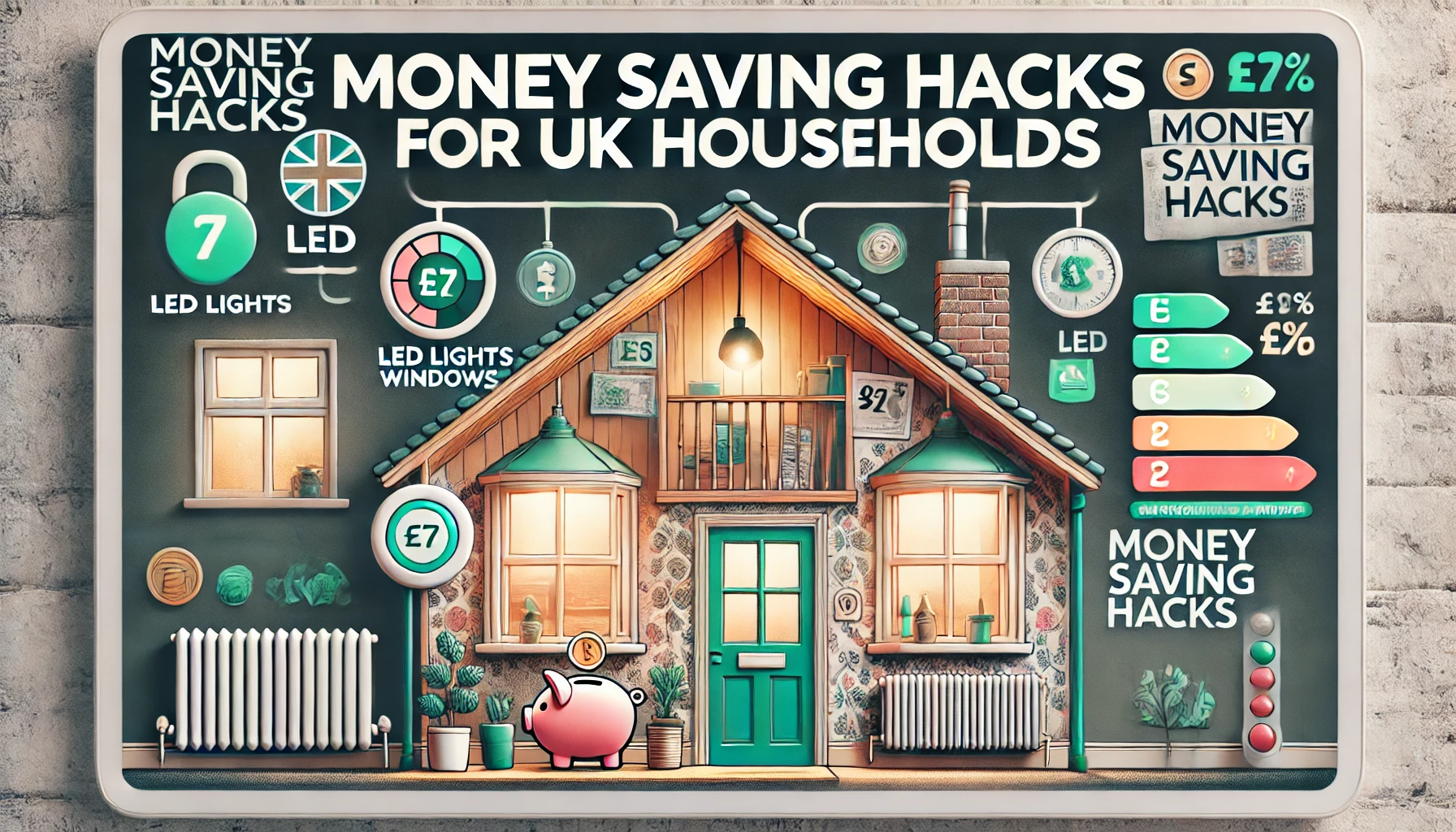Introduction
With rising utility costs, UK households are looking for innovative ways to save money on energy, water, and heating. The good news is that there are simple, actionable hacks that can lead to significant savings over time. From optimizing appliance use to adopting energy-efficient habits, these tips from UtilityKing can help you keep your utility costs low and your household budget in check.
UtilityKing Insight: Small changes can lead to substantial savings on your utility bills. With UtilityKing’s money-saving hacks, you can make your home more efficient and reduce costs without sacrificing comfort.

Topic Guide: Money-Saving Hacks Covered
Lower Your Thermostat by One Degree
Reducing your thermostat by even one degree can save up to 10% on heating costs. In colder months, aim to keep your thermostat set at a comfortable but efficient level.
- Recommended Range: Set your thermostat between 18–21°C for energy efficiency.
- Programmable Thermostats: Use a programmable thermostat to automatically lower the temperature when you’re asleep or away.
-Lowering the thermostat by one or two degrees may go unnoticed but can lead to noticeable savings.
Take Advantage of Natural Light
Maximize natural light during the day to reduce reliance on artificial lighting. Not only does this cut down on electricity usage, but natural light also provides warmth, reducing heating needs.
- Open Curtains and Blinds: Letting sunlight in can naturally warm rooms, helping you cut back on heating costs.
- Light Décor Choices: Light-colored walls and décor reflect more sunlight, making rooms brighter without extra lighting.
-Simple adjustments like letting in sunlight can make a difference in both lighting and heating costs, especially in the winter.
Use Cold Water for Laundry
Washing clothes in cold water instead of hot can reduce your energy use, as heating water consumes a large portion of a household’s energy.
- Energy Savings: Cold water washing uses less energy and is gentle on clothes.
- Effective Cleaning: Many detergents are designed to work well in cold water, so you don’t sacrifice cleanliness.
-Reserve hot water washes for heavily soiled items and use cold water for regular loads to save on energy.
Invest in a Low-Flow Showerhead
A low-flow showerhead reduces water consumption by up to 40% without compromising water pressure, helping you save on both water and heating costs.
- Water Savings: Low-flow showerheads use less water per minute, which can add up over time.
- Lower Water Heating Bills: With less water to heat, you’ll see savings on your energy bill as well.
-Swapping out your showerhead for a low-flow model is a one-time investment that pays off with consistent savings.
Unplug Devices When Not in Use
Electronics and appliances consume energy even when they’re off but still plugged in. Unplugging them when they’re not in use prevents “phantom” energy use, reducing your electricity bill.
- Power Strips: Plugging multiple devices into a power strip makes it easy to turn them all off at once.
- Standby Savings: Phantom power can account for 10-15% of household electricity use, so unplugging is an easy way to save.
-Use smart plugs with timers to automatically cut off power to devices overnight or when not in use.
Insulate Your Hot Water Tank
Adding an insulating jacket to your hot water tank helps it retain heat, reducing the energy required to keep the water hot. Insulating hot water pipes can also help maintain water temperature.
- Reduce Heat Loss: Insulating your water tank can reduce heat loss by up to 25%.
- Quick Payback: Tank insulation jackets are inexpensive and typically pay for themselves within a few months.
-Insulating your hot water tank is a quick, cost-effective way to reduce energy consumption without any major changes.
Wash Full Loads Only
Avoid washing half loads of laundry or dishes, as these use nearly the same amount of energy and water as full loads. Wait until you have a full load to maximize efficiency.
- Efficient Appliance Use: Washing full loads means you’re using less energy and water per item.
- Energy-Saving Settings: Use the eco-setting on your dishwasher or washing machine for additional savings.
-Running full loads reduces the frequency of washing cycles, leading to lower energy and water bills.
Take Advantage of Off-Peak Rates
If your energy provider offers off-peak rates, schedule high-energy activities like laundry, dishwashing, or heating water during these times for added savings.
- Economy 7 or Economy 10 Plans: Check if you’re on a plan that offers off-peak rates, as these can significantly reduce costs.
- Automated Scheduling: Many appliances have delayed start options, allowing you to run them during off-peak hours.
-UtilityKing’s comparison tool can help you find plans with off-peak rates, maximizing savings for households with flexible energy needs.
Use a Clothesline or Drying Rack
Drying clothes outdoors or on a drying rack instead of using a tumble dryer saves a considerable amount of energy. Tumble dryers are one of the most energy-intensive household appliances.
- Energy-Free Drying: Air drying clothes uses no energy, saving you money and extending the life of your clothing.
- Indoor Drying: During colder months, an indoor drying rack is a cost-effective alternative to the dryer.
-Air drying is a simple way to cut down on energy costs, especially if you use the dryer frequently.
Switch to a Green Energy Tariff
Switching to a green energy tariff with UtilityKing can help you save money while supporting sustainable energy sources. Renewable energy is often less affected by market volatility, offering stable pricing and potential savings over time.
- Competitive Rates: UtilityKing’s green energy tariffs are priced competitively, making them affordable alternatives to traditional energy.
- Long-Term Savings: Green energy tariffs are generally less susceptible to price spikes, providing stable, predictable costs.
-Switching to a green tariff allows you to save money while supporting a sustainable future, reducing both your costs and your carbon footprint.
